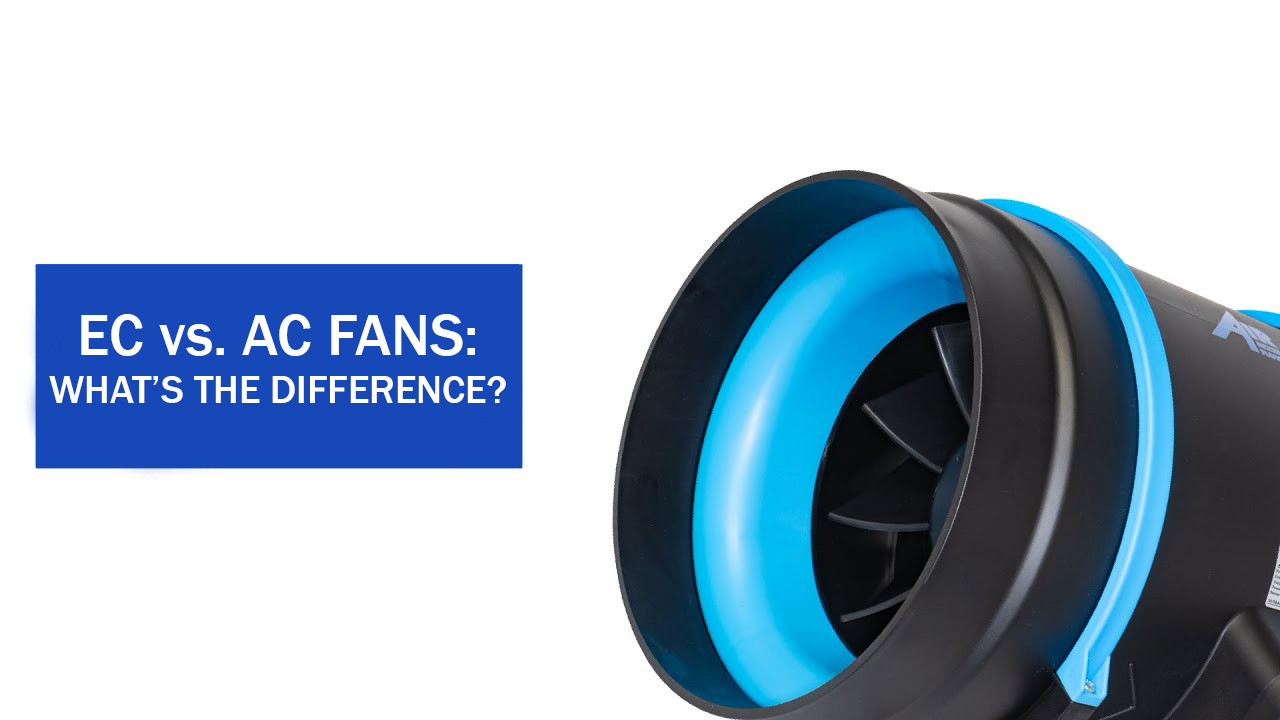Environment
What is the difference between AC and EC fans?
Creating an indoor growing environment involves many considerations, among which the choice between AC (Alternating Current) and EC (Electronically Commutated) fans plays a crucial role. These fans serve the essential purpose of ventilating the space, controlling temperature and humidity, and ensuring healthy plant growth. This article aims to explore the differences between AC and EC fans, their advantages, disadvantages, and which might be best suited for your indoor growing needs.
Introduction to Indoor Growing Ventilation
Proper ventilation is critical in an indoor growing setup. It helps in managing the temperature, replenishing CO2, and removing excess humidity, thus preventing mold and mildew. Fans are at the heart of the ventilation system, and choosing the right type can significantly impact your growing success.
AC Fans: Overview and Benefits
AC fans are powered by alternating current and are commonly used in various applications, including indoor growing. They are known for their reliability and simplicity.
Advantages of AC Fans:
- Cost-Effectiveness: AC fans are generally less expensive upfront compared to EC fans. This makes them an attractive option for growers on a budget.
- Simplicity: They are easier to install and maintain due to their simple design.
- Availability: AC fans are widely available and come in a variety of sizes and designs to fit different ventilation needs.
Disadvantages of AC Fans:
- Energy Efficiency: AC fans are less energy-efficient than EC fans, which can lead to higher electricity costs in the long run.
- Noise: They tend to be noisier, which can be a consideration if noise is a concern in your growing area.
- Flexibility: AC fans usually have fixed speeds, limiting flexibility in controlling airflow.
EC Fans: Overview and Benefits
EC fans combine AC and DC technologies, using an electronically commutated motor that can be precisely controlled. They are becoming increasingly popular in indoor growing due to their efficiency and flexibility.
Advantages of EC Fans:
- Energy Efficiency: EC fans are significantly more energy-efficient than AC fans. This can lead to substantial savings on electricity bills over time.
- Control: They offer variable speed options, allowing for precise control over ventilation based on the specific needs of the plants.
- Quiet Operation: EC fans operate more quietly compared to AC fans, making them ideal for noise-sensitive environments.
Disadvantages of EC Fans:
- Cost: The initial investment for EC fans is higher, though the energy savings can offset this over time.
- Complexity: They may require a more complex installation and setup due to their advanced control systems.
Which Fan is Right for Your Indoor Grow?
The choice between AC and EC fans largely depends on your specific needs, budget, and long-term goals.
- For Budget-Conscious Growers: If upfront cost is your primary concern, AC fans might be the right choice. They provide adequate ventilation at a lower initial investment.
- For Energy Efficiency and Control: If you prioritize energy efficiency, noise levels, and precise control over your growing environment, EC fans are the superior option. They offer long-term savings and improved plant health through better environmental management.
Conclusion
Both AC and EC fans have their place in indoor growing. The decision should be based on a careful consideration of your current needs, future plans, and the specific requirements of your plants. Investing in the right ventilation system will pay off in the health and yield of your indoor garden.

